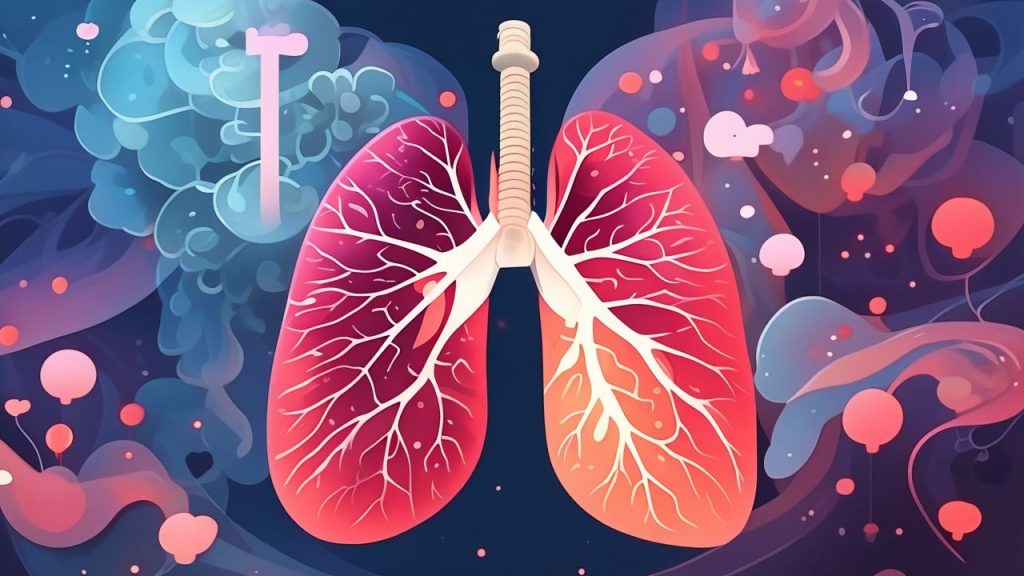Bronchoscopy,Ultrasound bronchoscopy,and Fluorescence bronchoscopy
What is Bronchoscopy?
The principle of bronchoscopy involves inserting a thin tubular structure equipped with imaging or camera devices at its lower end, through the nasal or oral cavity of the patient into the bronchi of the lungs. Observations of the bronchial abnormalities deep within the lungs are made either through a viewing window at the upper end or via a computer monitor connected to the video line and operating handle. If suspicious lesions are detected, a biopsy device can be inserted through the hollow channel within the bronchoscope to collect tissue samples for pathological examination.

For patients with lung cancer who are candidates for curative resection, bronchoscopy is necessary before surgery to determine the exact extent of tracheal invasion by the tumor, and after surgery to inspect the tracheal resection margins for any residual disease. For lung cancer patients who are not candidates for surgical resection and whose tumors are assessed by CT to be growing in the larger central trachea, it is also required to obtain tissue for pathological diagnosis.
Lung cancer, originating from the bronchial epithelium and fully termed “bronchogenic carcinoma,” theoretically can be visualized in any segment of the bronchi if the bronchoscope is sufficiently fine. However, due to technological limitations, current bronchoscopes can only reach the relatively larger bronchi. Nevertheless, it remains critically important in the diagnosis of lung cancer, and every eligible patient should undergo the procedure whenever possible.
Additionally, it can also differentiate some lesions that may be misdiagnosed as lung cancer, such as foreign bodies in the bronchi or benign bronchial tumors. Identifying these conditions through bronchoscopy can prevent further misdiagnosis and inappropriate treatment.

What is Ultrasound bronchoscopy?
Ultrasound bronchoscopy, also known as endobronchial ultrasound (EBUS), is a minimally invasive diagnostic procedure used to evaluate the lungs and lymph nodes in the chest for the presence of cancer, particularly lung cancer.
Here’s Ultrasound bronchoscopy procedure:
- Anaesthesia: The patient is usually given general anesthesia to ensure comfort and relaxation during the procedure.
- Insertion of the Bronchoscope: A thin, flexible tube called a bronchoscope is inserted through the mouth or nose and guided into the airways. This tube has a small ultrasound probe at its tip.
- Visualization: The ultrasound probe emits sound waves that create detailed images of the airways and the surrounding structures, such as lymph nodes. These images are displayed on a monitor, allowing the physician to visualize areas of interest.
- Biopsy: If suspicious areas are detected, the physician can use the bronchoscope to guide special tools through the airways to obtain tissue samples (biopsies) from these areas. The samples are then sent to a laboratory for analysis to determine if cancer cells are present.
- Staging: In cases where lung cancer is already diagnosed, EBUS can help determine the stage of the cancer by assessing whether it has spread to the lymph nodes. This information is crucial for planning the most appropriate treatment.
- Recovery: After the procedure, the patient is monitored until the effects of the anesthesia wear off. Most people can go home the same day, but sometimes an overnight stay in the hospital is required.
EBUS is a powerful tool in the diagnostic arsenal for pulmonologists and thoracic surgeons because it provides real-time imaging and allows for targeted biopsies, which can help in making an accurate diagnosis and staging of lung cancer.
What is Fluorescence bronchoscopy?

Fluorescence bronchoscopy is a specialized medical procedure that is typically performed in hospitals with advanced pulmonology (lung) units (such as Duke University Hospital).It is a type of bronchoscopy that uses fluorescence imaging to visualize the inside of the airways and identify abnormal areas that may be cancerous or pre-cancerous. It is an advanced technique that can be used in conjunction with standard white-light bronchoscopy to enhance the detection of lung cancer.
Here’s Fluorescence bronchoscopy procedure in the context of lung cancer evaluation:
- Standard Bronchoscopy: The procedure begins with a standard white-light bronchoscopy to visually inspect the airways.
- Fluorescent Imaging: After the initial white-light examination, a special fluorescent dye (such as porfimer sodium) is administered either systemically or directly sprayed onto the mucosal surfaces of the airways. This dye is preferentially taken up by rapidly dividing cells, which is a characteristic of cancer cells.
- Visualization: The bronchoscope is then equipped with a blue light source that causes the dye to fluoresce, making abnormal cells, such as cancer cells, appear bright under the special light. This fluorescence can help to highlight areas that may not be clearly visible under standard white light.
- Biopsy: If suspicious areas are identified, the physician can perform biopsies or cytological brushings of these areas for further analysis.
Advantages of fluorescence bronchoscopy include:
- Improved Detection: It can help to visualize early-stage lesions and areas of dysplasia that might be missed with standard white-light bronchoscopy alone.
- Targeted Biopsies: By highlighting potentially cancerous areas, fluorescence bronchoscopy can guide the physician to take more targeted biopsies, potentially increasing the yield of diagnostic samples.
- Minimally Invasive: It is a minimally invasive procedure with a lower risk of complications compared to more invasive surgical procedures.
- Real-time Imaging: The dye and fluorescence allow for real-time imaging, which can aid in the immediate assessment of suspicious lesions.
However, fluorescence bronchoscopy has its limitations and may not be suitable for all patients or all types of lung lesions. The decision to use fluorescence bronchoscopy is typically based on the patient’s clinical history, the presence of risk factors for lung cancer, and the results of other diagnostic tests.

